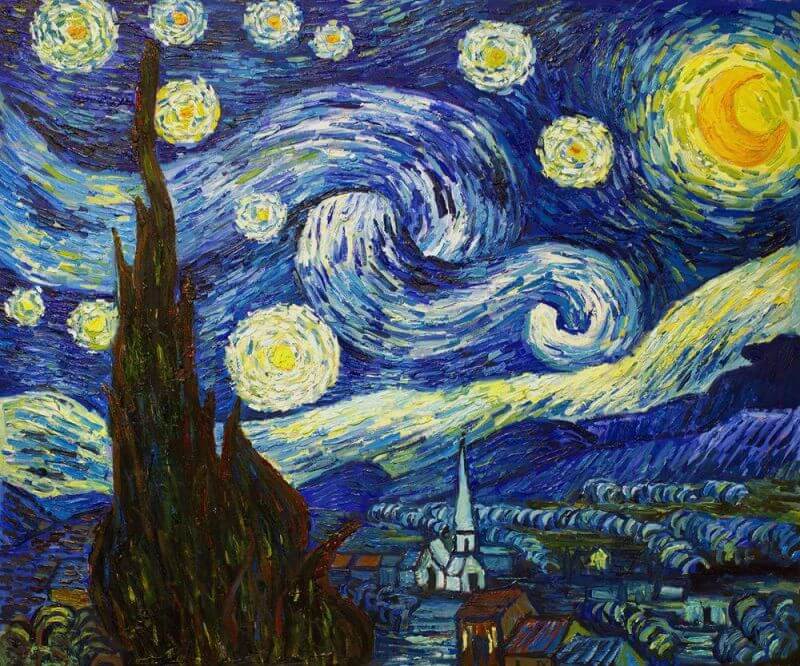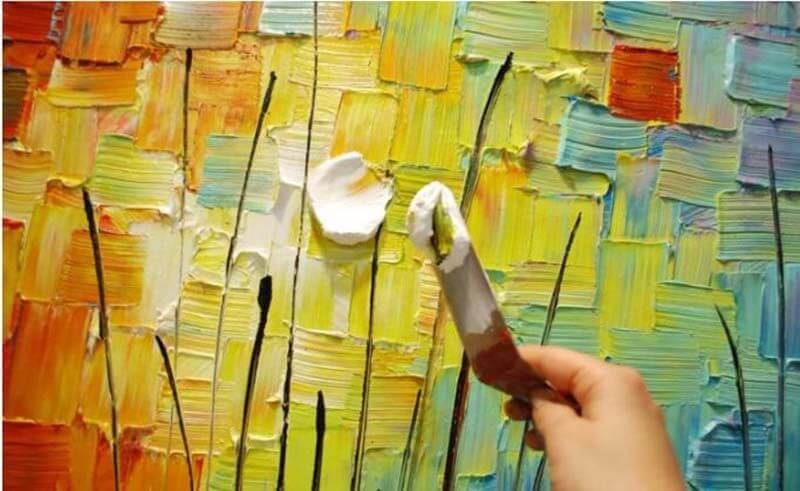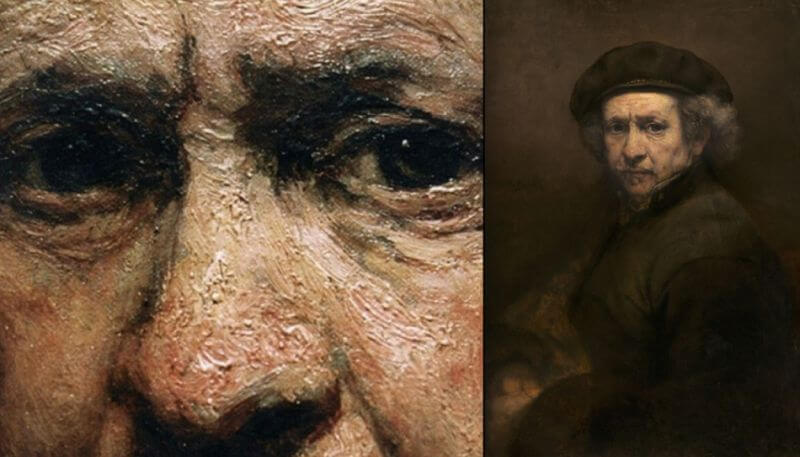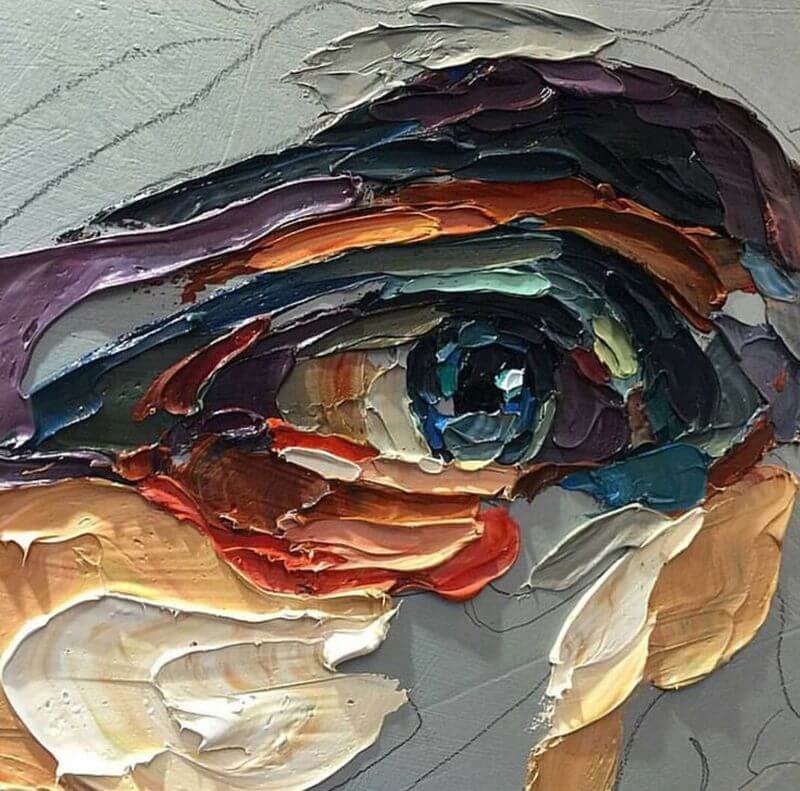Who Is the Artist That Is Associated With the Art Technique Called ââåaction Paintingã¢ââ?
Impasto
Each creative person'due south paintings are a reflection of the world: Degas saw the world in pastel colours, Signac depicted it as mottled, and Leonardo da Vinci saw it as 'ethereal'. All the great artists painted their masterpieces not with paints, simply with emotions. Today, we are going to talk about one of the most unusual techniques of all: impasto.
The history of impasto
Impasto is an Italian term and it translates as 'smooth' or 'paste-like'. The technique involves giving the paints a thick consistency with the help of a palette pocketknife, brush or spatula. The brushwork will retain its uneven texture. There are a large number of visual effects that an creative person using the technique may be striving to achieve, but the nigh important ones are the added bulk and the play of light and shade. The brush-strokes may be straight, rounded or cross-hatched. Some artists only used this arroyo for certain elements of their works, with the aim of emphasizing them and bringing them to the fore, while others covered the whole canvas with an uneven ripple issue.

Vincent van Gogh "The Starry Night"
The impasto technique is usually associated with the piece of work of Vincent Van Gogh. It is said that he applied the paints directly onto the canvas and simply mixed them together with his own fingers. One of the examples of the impasto technique in his oeuvre is the painting The Starry Night. Here, in gild to brand the stars in the nighttime sky appear every bit bright as possible, he strove to utilise paint with an extremely thick consistency, using bold brush-strokes, thereby highlighting the lights.
In order for the brush-strokes to appear even thicker and more expressive, artists did not shy away from using thickening agents on occasion. This would lend the painting an incredible texture. One of the substances widely used for this purpose, for case, was wax. With each brush-stroke, the touches of the palette knife or spatula were imprinted on the painting. Works featuring this technique were produced by artists from a wide range of movements and eras: the Renaissance, the Baroque catamenia, Impressionism, Expressionism, Post-Impressionism. Interestingly, the Impressionists practical paste from tubes directly onto the sheet, creating the outlines required with a castor once the paint was in situ.

The 3D effect and optical illusions
Rembrandt and Velazquez were among the other great painters to have used this method of applying paint extensively when creating their famous works. Surprisingly, they were able to use impasto to create naturalistic textures: gemstones, pocket-sized wrinkles on people's faces, the flowing locks of beautiful noblewomen, lace ribbons, the folds of garments and fabrics, the gleaming sparkle of adornments and the glint of jewellery, atmospheric phenomena and effects: all the details that might at outset glance be deemed insignificant were portrayed with astonishing subtlety and sensitivity.

Rembrandt van Rijn "Self-Portrait with Beret and Turned-Up Collar"
In the era of Impressionism and Expressionism, this technique made information technology possible to obtain a wonderful mirror-image of a crumpled or broken surface, to pick out areas of light amid the darkness, and to emphasize a space. Information technology was the perfect fashion to convey feelings, concerns and emotions for the paintings of the Expressionists, for them to limited their egos on canvas, and to show what is attainable only to those who see, non to those who merely look. Claude Monet, for instance, used an architectural approach to the impasto technique, at a time when other Impressionists were applying 2 methods simultaneously: they were using materials that helped with setting and devising new bases for their paints. Edgar Degas was an exponent of the first of these techniques, incidentally.

Obtaining the textures required
When acryl is used, at that place is a wider range of possibilities in terms of the bases that tin be created, but primers like this are accounted to be too coarse to withstand cracking and peeling. That said, despite its drawbacks, it can really add zest to an creative person's piece of work. Whereas in the past artists strove to avoid having brush-strokes visible on their canvases, today the reverse is true: there are quite a number who use bold, tangible brush-strokes to give the required character to an element of the painting.
There are a whole range of methods and rules for applying paints to bases:
- With the assistance of a brush, a palette knife, a tube or using additional additives;
- The thick layer should be allowed to dry in conditions whereby the process can take place every bit slowly as possible. This approach protects the layer of pigment from bully up and prevents wrinkles from appearing;
- If the ingredients are too fatty, this will definitely make it more than difficult to create textures and expressive brush-strokes;
- Flat brushes or small-scale brushes made of artificial horsehair volition be ideal for this technique;
- If you add sawdust, sand or very fine dust to the pigment, this volition lend a unique aspect to the texture and allow you to really liven up your work, and in a higher place all – to increment the book of each castor-stroke;
Some artists cover their completed paintings with a special coat. Its thin film provides excellent protection that will prevent cracks and wrinkles appearing in the pigment and prevent it from peeling.
The most popular means of using impasto:
Needless to say, this technique can be used in some unbelievably various ways. And yet after so many centuries of variation, there is still enough room to let your imagination run wild. Nonetheless, at that place are a few techniques which are already thought of as classic ones:
- The thick stain: the paint is applied in broad, generous brush-strokes, as if you were spreading peanut butter on a slice of toast. The marks fabricated by the palette knife will remain visible, and they will provide texture to the area in which they are applied;
- Dashed and dotted lines: this result is achieved when the paint is dabbed onto the canvas with a palette knife. On the lower part of the canvas, the pigment that is applied gets ever so slightly stretched when the implement is pulled away from the canvas, leaving tiny crests;
- Rounded brush-strokes: a rounded brush and a very moist paint are used to create the arcs and semi-circles that Van Gogh loved to paint;
- Lines: it is important that the lines don't overlap with one some other. This will provide extra character to the part of the canvas on which information technology is used;
Using whatsoever materials come to hand: this is not exactly a classic technique. Pick upwards anything that can be used to spread the paint over the canvass and simply experiment. You could start with a niggling cushion castor, for instance – you're bound to get unusual results.
The bear on of impasto is such that information technology is worth beingness assuming and adopting a free way; utilise curved, sweeping brush-strokes to employ a thick layer of paint to the canvas and bear witness the whole world how it looks, when seen through your eyes!
fennellhimeduced2002.blogspot.com
Source: https://www.oldholland.com/fr/academy/impasto/
0 Response to "Who Is the Artist That Is Associated With the Art Technique Called ââåaction Paintingã¢ââ?"
Post a Comment